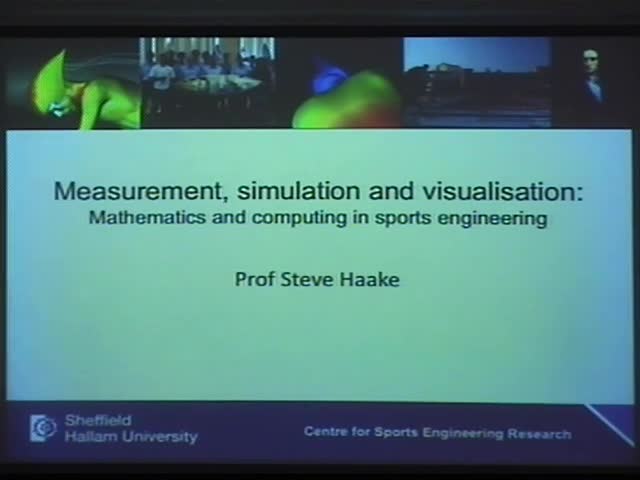Measurement, simulation and visualisation: mathematics and computing in sports engineering
Presenter
March 10, 2011
Keywords:
- sports engineering; motion analysis; sports simulation; kinect
MSC:
- 47N10
Abstract
The development of new sports equipment, the optimization of performance or the enjoyment of the spectator has been enhanced in recent years through the rapid in computing power. In general, the anlysis of sport requires three things; (1) the experimental measurement of athlete and equipment in 3 dimensions (the reality); (2) mathematical approximation of the motion in the form of analytical or numerical simulation (the analysis); and (3) the visualization of the results in a meaningful way (the virtual reality).
This presentation will describe how mathematics and computing has contributed to the work of sports engineers to allow them to measure the effects of new interventions designed to improve performance. Examples will be given of pragmatic systems to measure the athlete 'in the field' in professional sports such as soccer and tennis, and Olympic sports such as diving and swimming. The use of finite-element analysis and computation fluid dynamics of tennis and cycling will be described as will the integration of their results with analytical models to determine how to improve performance.
The results from experimentation and simulation have used more and more complex graphics as computing power has increased. A glimpse of the future can be had with the use of low-cost 3-dimensional cameras used in devices such as the Kinect controller. Such systems link together the possiblity of performing complex biomechanical on mobile devices with feedback in the virtual world.
